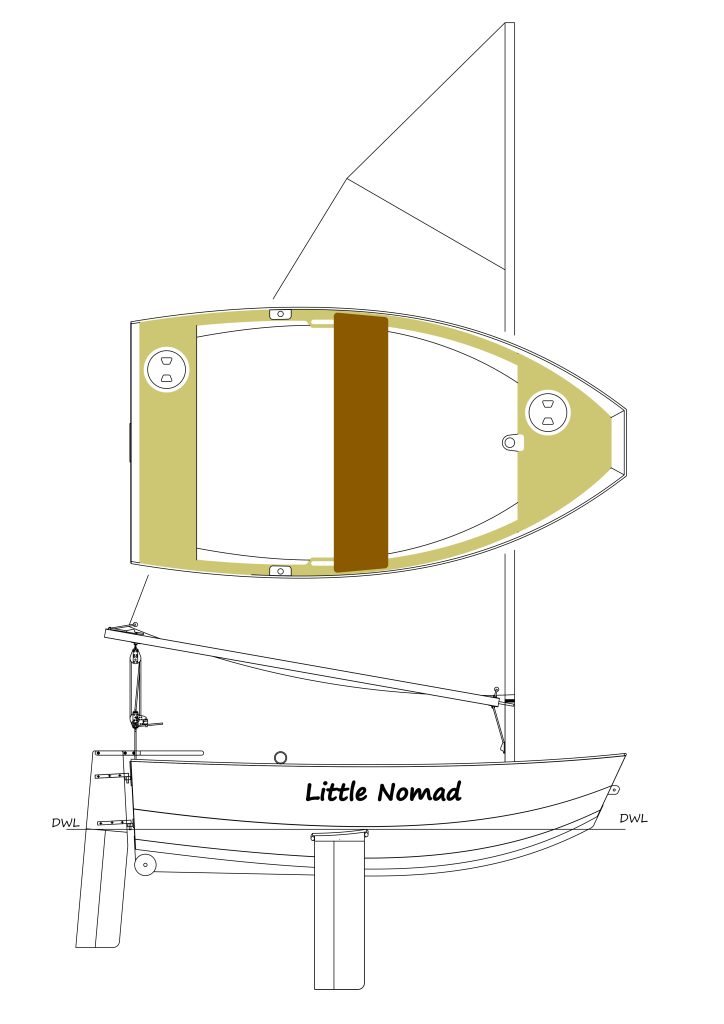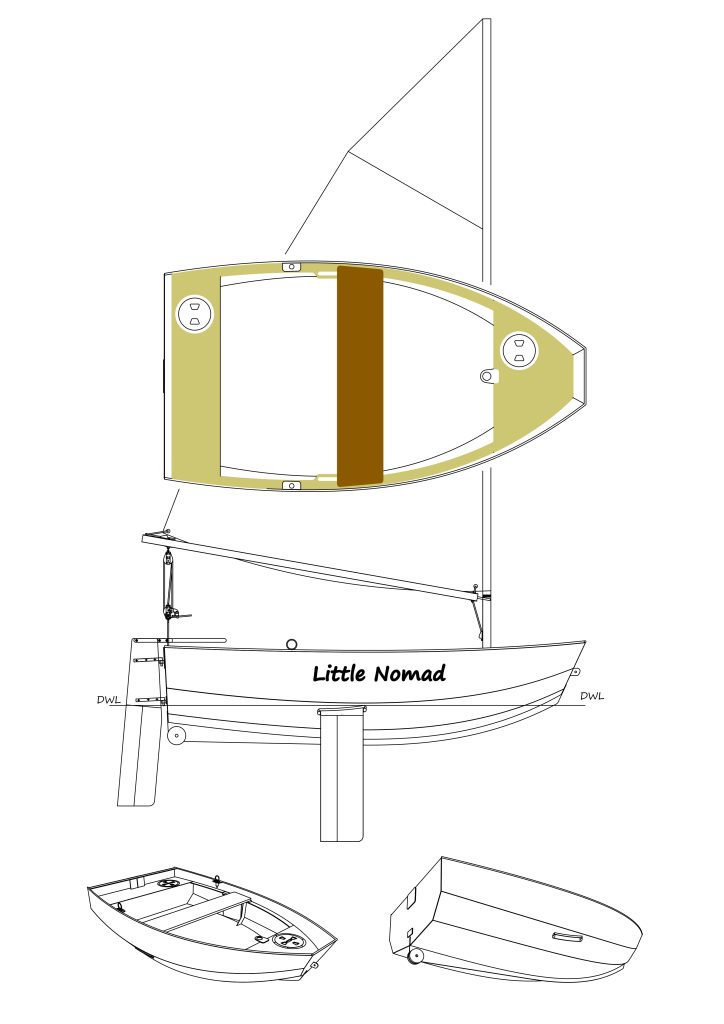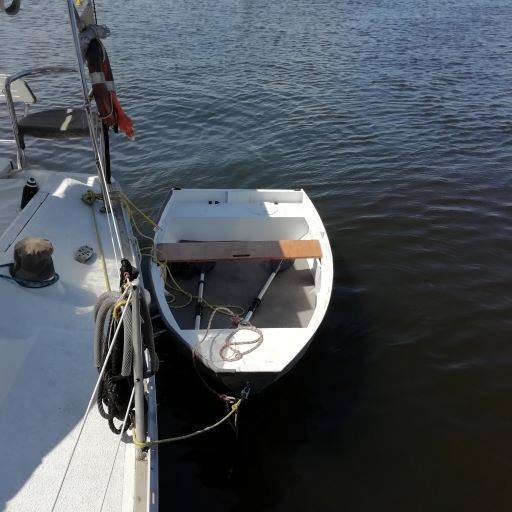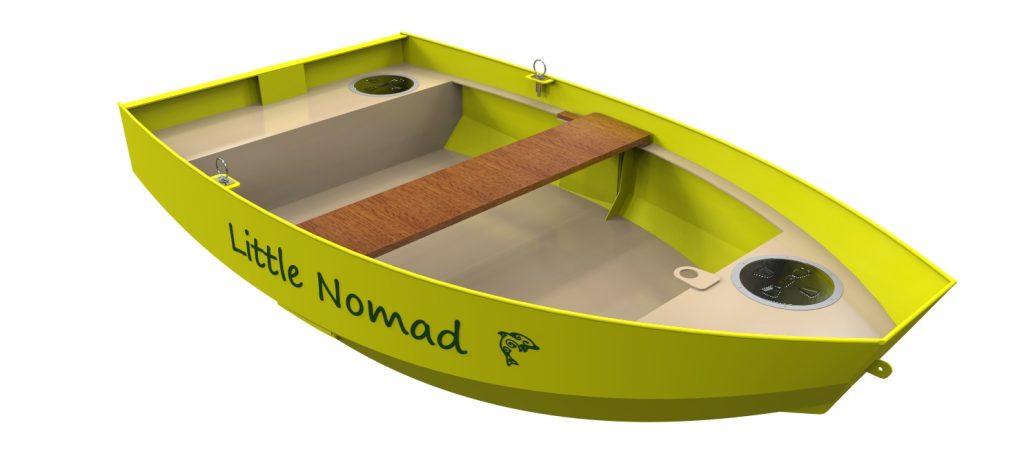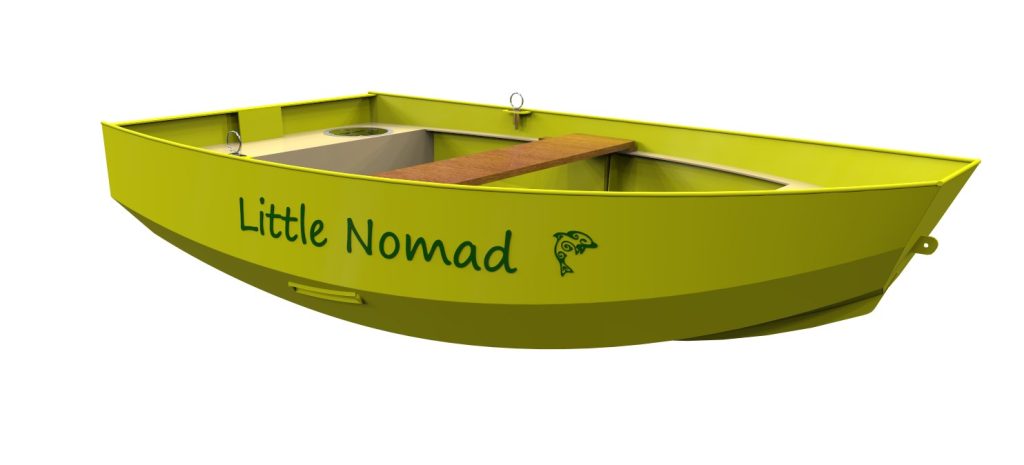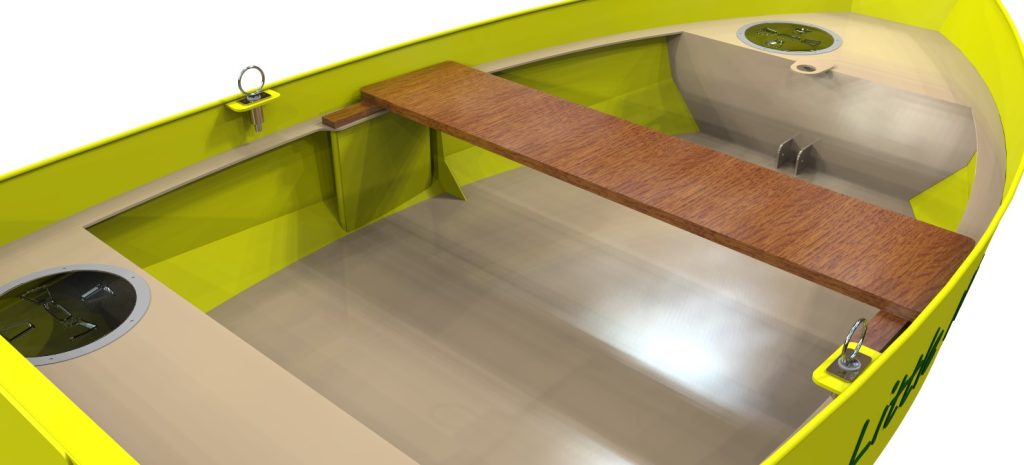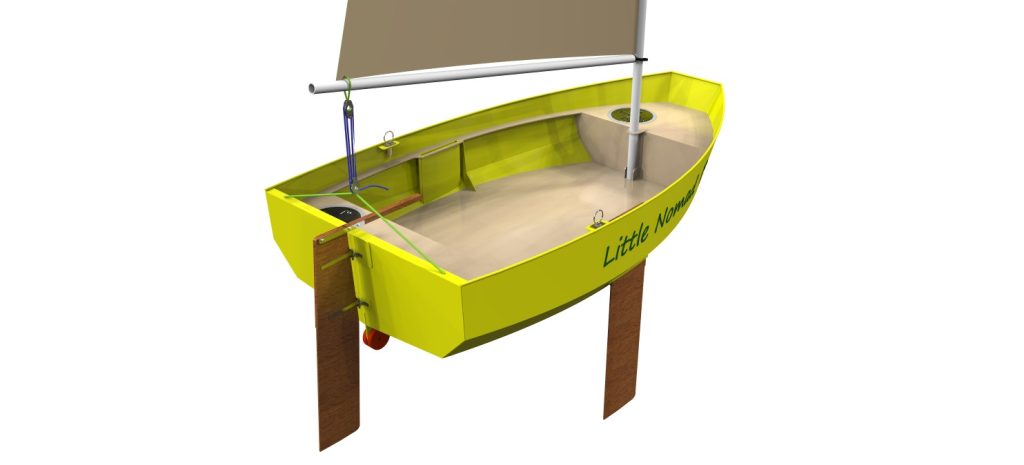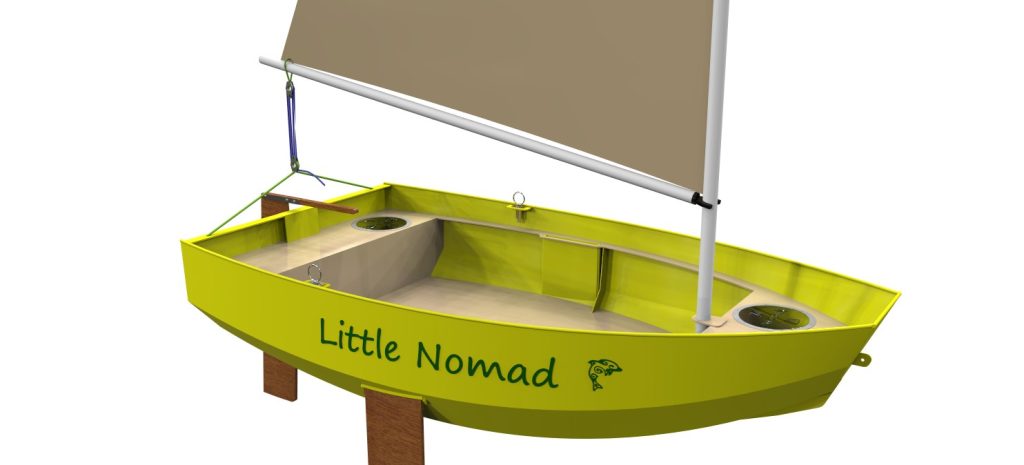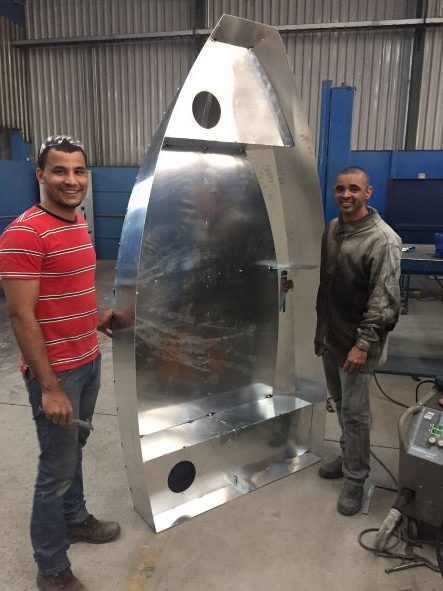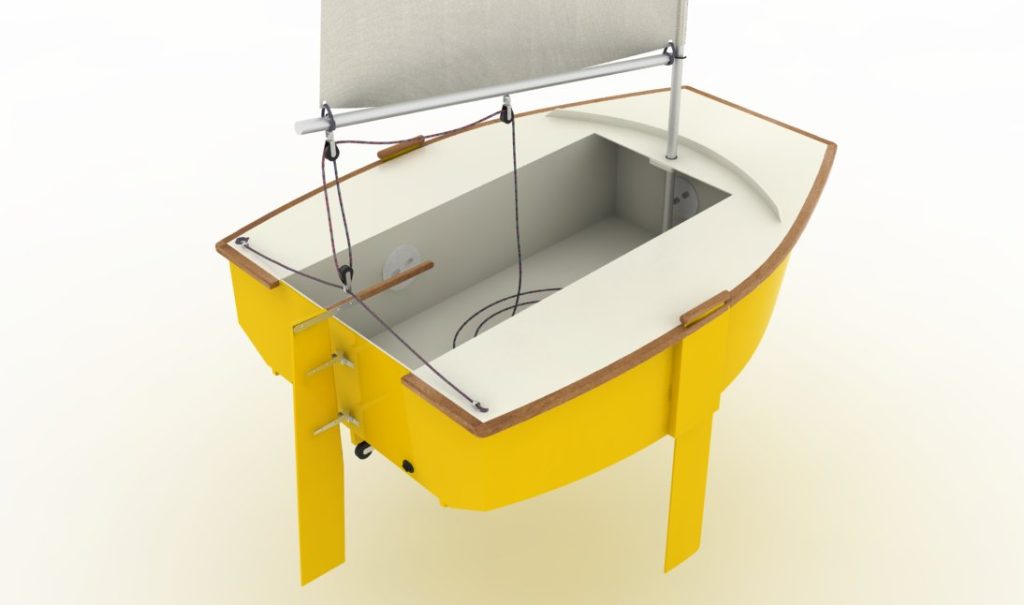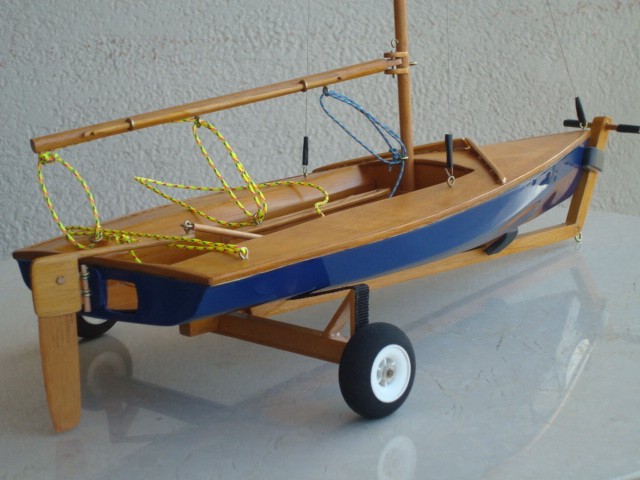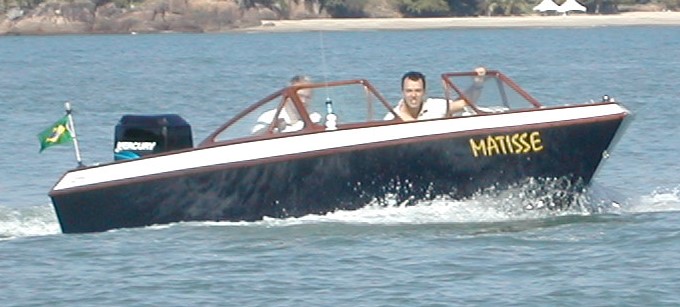The Little Nomad has been designed as a aluminium tender for a small to medium sized ocean voyaging yacht, with longevity and safety as main design constraints.
Not only will this dinghy perform the usual tasks assigned to yacht tenders with great ease, due to its large cargo capacity and floor space, but also it can double as a survival craft (not to be used in lieu of officially approved craft as required by national authorities), as it has positive floatability conferred by watertight compartments and a double floor, and three independent means of propulsion, oars, sails and outboard engine.
Along the years we have been in enough situations where the breakage of an outboard motor could result in very uncomfortable if not outright dangerous and life-threatening situations, such as going from shore to boat or between boats at night in the Caribbean, where the next land to windward could be Panama or another Central American nation.
Next comes the incertitude of rolled and packed life rafts, from which enough accounts of failure have been heard. We are not advocating the neglect of the regular life raft, but to have a back-up plan is a good idea. Many times, sailors are in situations where life raft revision facilities are unavailable or unreliable, and a tender that can act as lifeboat should be a welcome addition.
But not only of serious matters is made the life of this dinghy, and we designed a sail plan that turns this into a recreational watercraft on its own right. It can be sailed, rowed, or powered by and outboard engine.
If you are looking for a competent tender for your yacht or for an easy to transport rowing/sailing/exploring dinghy, the Little Nomad may be the boat for you.
The design offers a complete CNC kit for automatic cutting of all aluminium parts, and this should appeal for a small-scale series production or even for a warmup project, prior to tackling a more complex and demanding build.
Technical Data
Length Overall
2.30 m (7.5 ft)
Length Waterline
1.95 m (6.4 ft)
Beam
1.25 m (4.1 ft)
Draft
0.22 m (0.7 ft)
Draught (leeboard down)
0.75 m (2.5 ft)
Displacement (light condition)
225 kg (496 lb)
Reserve buoyancy
257 kg (567 lb)
Sail Area
3.3 m2 (36 sq. ft.)
Sail Area (Survival Craft Version)
2.3 m2 (25 sq. ft.)
Auxiliary Propulsion
Oars (2m or 6.5ft long),
2 to 5 hp outboard engine
Construction
Aluminium
List of Plans
LN – S1 – Lines Plan
LN – S2 – Structural and Assembly Plan
LN – S3 – CNC Kit Files Layout
LN – S4 – Sail Plan
LN – S5 – Rudder, Lee Board and Seat
Boat Description
At 2.30m LOA with a maximum beam of 1.25m, Little Nomad will make a good tender for many boats, and the aluminium construction will ensure a long life in service. The hull weight is 48 kg, and although not a featherweight boat, it is comparable to an average RIB of similar dimensions.
The internal space is big enough for the usual tasks a tender has to perform, such as carrying water and fuel in jugs, provisions and even for small exploring expeditions. There are two accessible watertight compartments in the bow and aft seats and a sealed one under the floor.
Not only for an added safety when acting as a tender, but also to make this dinghy a recreational boat on its own, we provided the Little Nomad with a mast step, two lateral dagger board slots and a rudder attachment on the transom.
For this effect, we suggest two different sail plans, a short 3.2m mast for use as emergency or lifeboat propulsion, and a 3.8m mast (both in two parts) for use as recreational sailing craft.
For rowing a movable seat can be locked in place over the two side dagger board slots. These slots are conveniently out of the way and when sailing the whole cockpit can be free.
For mechanically powered propulsion we suggest the use of electric outboards, such as the Travel 503 or Travel 1003 from Torqeedo. With the addition of a solar panel this could mean an unlimited range for the boat even in calm situations.
We suggest carrying a canvas tent that can be rigged over the boom to protect the crew from exposure when used in lifeboat mode. A more sophisticated coverture could be added to the abandon kit.
Boat Plans
Browse Gallery
See Related Plans

